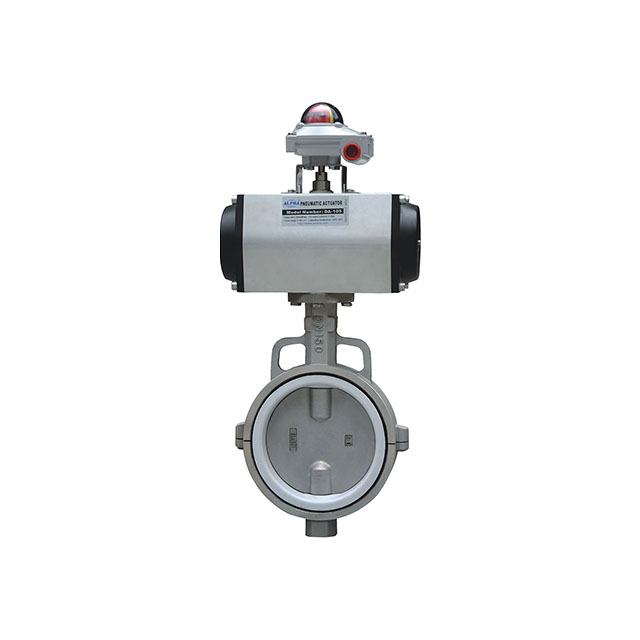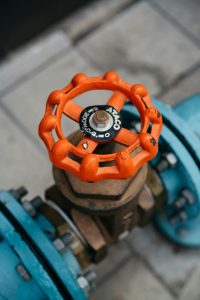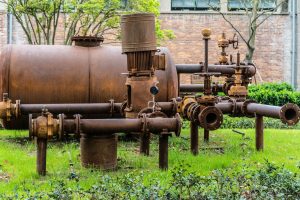Table of Contents
ToggleWhile both ball valve and butterfly valve are used in the same way, there are a few key differences. Ball valves provide better cutoff characteristics in high-pressure applications. Butterfly valves require a pressure-balancing scheme to regulate the flow. This makes them better suited for a variety of services.
Both types of valves can control flow in a variety of applications. Ball valves can handle high pressures and temperatures, whereas butterfly valves typically operate at lower pressures and temperatures.
Both valves are designed to work in proportional and on-off controls, but ball valves are generally better at regulating flow. In addition, butterfly valves have only two ports, whereas ball valves can have multiple ports.
If you want to know more about the difference between a ball valve and a butterfly valve, continue reading this article.
What Is a Ball Valve?
The ball valve is widely used in a number of industries. It can come in many different sizes, shapes, and functions, and they are used for a variety of purposes. They must be maintained to operate properly, and regular cleaning and lubrication are crucial for their long life.
Ball valves are versatile, easy to operate, and inexpensive to maintain. They can handle pressures of up to 1,000 bars and temperatures as low as 752 degrees Fahrenheit. Typically, these valves are made of metal or plastic, and their bodies are made of ceramic or metal.
Chrome-plated floating balls are common. You can easily disassemble them for repair if you need to. These valves can be used in different industries to control as well as regulate the flow.
There are several types of ball valves, and the most common ones are floating and trunnion. Floating ball valves are the most common type of ball valves, while trunnion valves are generally more expensive.
Types of Ball Valves and How They Are Used
Ball valves, integral components in various industries, come in diverse types tailored to specific applications.
Purchasing from reputable manufacturers ensures reliability and performance. Here’s a closer look at some key types of ball valves and their applications:
Full-Port Ball Valves
Designed with a hole size mirroring that of the pipe, full-port ball valves provide maximum flow capacity, making them ideal for applications where unrestricted flow is critical.
Industries such as petrochemicals and oil & gas commonly employ them.
Reduced-Port Ball Valves
Featuring a smaller hole size than the pipe, reduced-port ball valves introduce controlled resistance to the flow.
They are preferred in situations where precise flow control is essential, making them suitable for applications in water treatment plants and HVAC systems.
V-Port Ball Valve
The V-shaped ball in these valves ensures a stable and accurate flow of materials.
V-port ball valves are utilized in industries like chemical processing and pharmaceuticals, where precise control over fluid or gas flow is crucial.
Cavity-Filler Ball Valve
Installed to prevent substance blockages in pipes, cavity-filler ball valves extend the seats to hinder blockages.
Industries dealing with slurries or viscous fluids, such as wastewater treatment plants, benefit from the efficient prevention of blockages.
Trunnion Ball Valve
In large-scale or high-pressure applications, trunnion ball valves excel by drifting away the ball, minimizing issues related to the seating mechanism.
Industries like power generation and oil refineries leverage trunnion ball valves for their robust performance under challenging conditions.
Choosing the appropriate ball valve type depends on the specific demands of the application, and sourcing them from reliable manufacturers ensures longevity and efficiency.
Pros and Cons of Ball Valves
Ball valves are crucial components in fluid control systems. While they offer various advantages, ball valves also have certain limitations.
Understanding their pros and cons is essential for selecting the right valve for specific applications.
Pros of Ball Valves
Quick Operation: Ball valves operate with a quarter-turn mechanism, allowing for rapid opening and closing. This swift operation is advantageous in emergency shut-off situations.
High Flow Capacity: Full-port ball valves, in particular, provide a straight-through flow path, minimizing flow restrictions and enabling high flow capacities.
Versatility: Ball valves are versatile and suitable for a range of applications, from low to high-pressure systems. They can handle various fluids, including corrosive and abrasive media.
Sealing Reliability: The design of ball valves, especially the trunnion-mounted ones, ensures effective sealing, minimizing the risk of leakage.
This is crucial for preventing environmental contamination and ensuring system integrity.
Ease of Automation: Ball valves are well-suited for automation using electric, pneumatic, or hydraulic actuators. This makes them integral components in automated control systems.
Low Maintenance: Generally, ball valves require minimal maintenance due to their simple design. This results in cost savings over the valve’s lifecycle.
Cons of Ball Valves
Limited Control Precision: While ball valves offer effective on/off control, they may not be the best choice for applications requiring precise throttling or modulation.
Potential for Water Hammer: Rapid closure of ball valves can create a water hammer, leading to pressure surges in the pipeline. Water hammers can cause damage to pipes and other system components.
Cost: High-quality ball valves, especially those designed for specific applications, can be relatively expensive. This initial cost may be a consideration for budget-conscious projects.
Size and Weight: In larger sizes, ball valves can become bulky and heavy. This can be a limiting factor in applications with space or weight constraints.
Temperature Limitations: Standard ball valves may have limitations in extreme temperature conditions, both high and low.
Specialized materials or designs may be required for extreme temperature applications.
In summary, ball valves are valuable assets in fluid control systems, offering quick operation, high flow capacity, and reliability.
However, their suitability depends on specific application requirements and potential drawbacks such as limited control precision and water hammer should be considered in the selection process.
What Is a Butterfly Valve?
It is a type of valve with a small opening and closing torque. Butterfly valves are more labour-efficient than other types of valves. The disc and seat of a butterfly valve are generally made of metal or non-metallic material. A butterfly valve’s operation is usually accomplished through either manual or electric means.
Butterfly valves are a great choice for larger-diameter pipes. Their unique design makes them ideal for large-diameter pipes. Butterfly valves can be used with stud bolts or flanges to connect to pipe flanges. These types are incredibly simple to use and install. There are also many different styles of butterfly valves. Make sure you choose one that suits your needs and budget.
Among the various types of valves available, the butterfly valve is the most common type. This type of valve is most often used in wastewater treatment, water purification, and pharmaceutical industries.
Types of Butterfly Valves and Their Applications
Butterfly valves are fundamental components in fluid control systems, leveraging a disc that rotates on a spindle to regulate flow.
Understanding the distinct types of butterfly valves and their applications is crucial for making informed choices in various industrial settings.
Wafer Butterfly Valve
Wafer butterfly valves are designed to be positioned between pipe flanges, offering a compact and lightweight solution.
Their application is particularly suitable for low-pressure scenarios, HVAC systems, and water treatment processes.
Lug Butterfly Valve
Similar to wafer valves, lug butterfly valves feature protruding lugs, facilitating easy installation and removal.
They find utility in semi-liquid systems and applications where pipe end flanges are not preferable.
Flanged Butterfly Valve
Flanged butterfly valves, with their employment in various piping connection techniques and distinctive elevated or winged edges, are commonly used in large-sized applications.
These include water treatment and HVAC systems where robust performance is essential.
Rubber-lined, Plastic-Lined, and Metal Butterfly Valves
Categorized into three main types based on lining materials, these valves offer versatility.
Rubber-lined valves are suitable for non-demanding applications, plastic-lined valves find application in harsh chemical environments and sanitary purposes, while metal valves excel in high-temperature or abrasive settings.
Pros and Cons of Butterfly Valves
Butterfly valves are widely used in various industries for fluid control, offering advantages and facing limitations that should be considered when selecting them for specific applications.
Pros of Butterfly Valves
Cost-Effective: Butterfly valves are generally more cost-effective than other valve types, making them a preferred choice for budget-conscious projects.
Low Maintenance: With fewer internal components, butterfly valves are known for their low maintenance requirements.
This simplicity reduces the likelihood of trapping fluids or debris, contributing to their durability.
Easy Installation: The design of butterfly valves simplifies installation, as they require clamping between adjacent pipe flanges.
This eliminates the need for welding or other complicated processes, saving time and labor costs.
Versatility: Butterfly valves can be used with various fluids and are suitable for a wide range of applications, including water treatment, HVAC systems, and industrial processes.
Fast Operation: Butterfly valves operate with a quarter-turn motion, providing fast response times.
This makes them ideal for emergency shut-off systems and critical applications where quick fluid control is necessary.
Cons of Butterfly Valves
Limited Pressure Handling: Butterfly valves may not be suitable for high-pressure applications, as the high pressure experienced during shut-off can increase wear and tear on seats and seals.
Limited to Small Designs: Butterfly valves are generally limited to smaller designs to manage torque levels.
This limitation may make them unsuitable for larger applications where higher torque is required.
Not Ideal for Thick Liquids: In applications involving thick liquids, butterfly valves may not be the best choice, as they can accumulate deposits that affect efficiency.
Potential for Seat Wear: The seat of a butterfly valve is a critical component, and over time, it may experience wear due to the rotational movement of the disc.
This wear can lead to reduced sealing effectiveness.
Understanding these pros and cons is essential for selecting butterfly valves that align with the specific requirements of a given system or project, ensuring optimal performance and longevity.
Difference between Ball Valve and Butterfly Valve
If you need to control the flow of fluids, then you will need to use a butterfly valve or ball, but which is better? While both valves are effective and have their advantages, the difference between them lies in how they perform.
Butterfly valves are operated manually or automatically. Manual actuations require no support and are often more affordable than other valve types. They come in many different designs, including a triple offset butterfly valve, which was developed for dirty flow environments and harsh chemicals. The valve’s stem position directly relates to the flow rate. It is also designed to minimize leakage and clogging. However, manual actuations are not as reliable as automatic actuations.
If you’re comparing the two types of valves for flow control, you’ll find that the butterfly valve has many advantages. Its flange-less connection allows it to be more cost-effective than a ball valve. It also is less susceptible to corrosion. This is a key consideration when comparing butterfly valves to ball valves. They both have many uses, so make sure you know what you need.
When it comes to size, the butterfly valve is relatively lightweight and can be installed in a smaller footprint. On the other hand, the ball valve is heavy and needs larger space for installation. However, while the butterfly valve is prone to leakages, the ball valve offers a tight seal and zero leakage. While ball valves are generally preferred for smaller applications, they can be used for high-pressure applications. The latter has the advantage of low leakage but can be hard to clean.
Key Takeaway
The choice between a ball valve and a butterfly valve hinges on specific application requirements.
Ball valves excel in tight shut-off applications, while butterfly valves offer cost-effectiveness and easy operation.
When selecting either type, the reliability and quality of the valve play a pivotal role.
Opting for a trusted and experienced valve manufacturer ensures that the chosen valve meets industry standards, providing longevity and efficient performance tailored to the needs of the system or project.
Whether prioritizing precision shut-off or seeking a cost-effective solution, the key lies in understanding the unique advantages and limitations of each valve type and making an informed decision based on the specific demands of the application.










